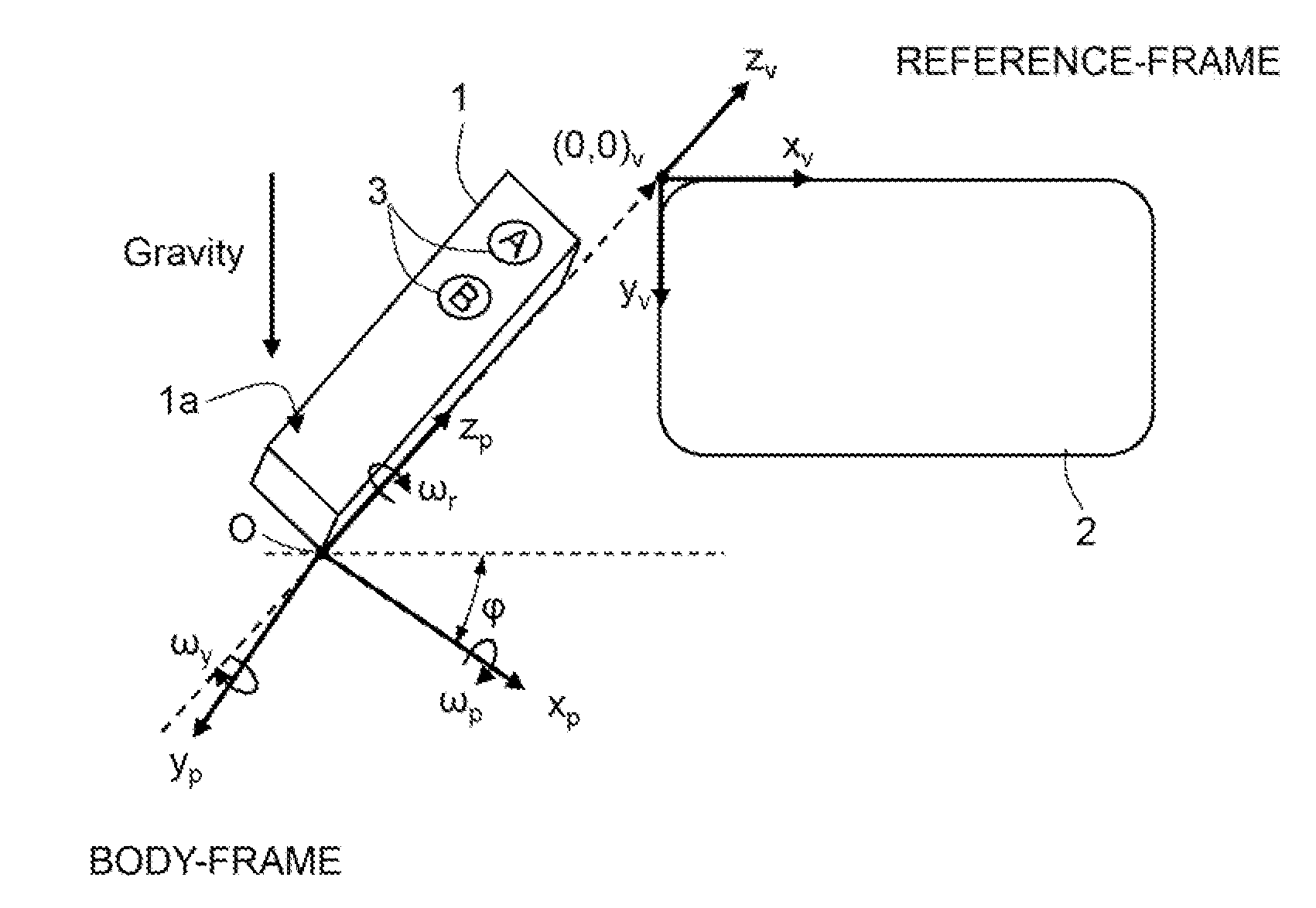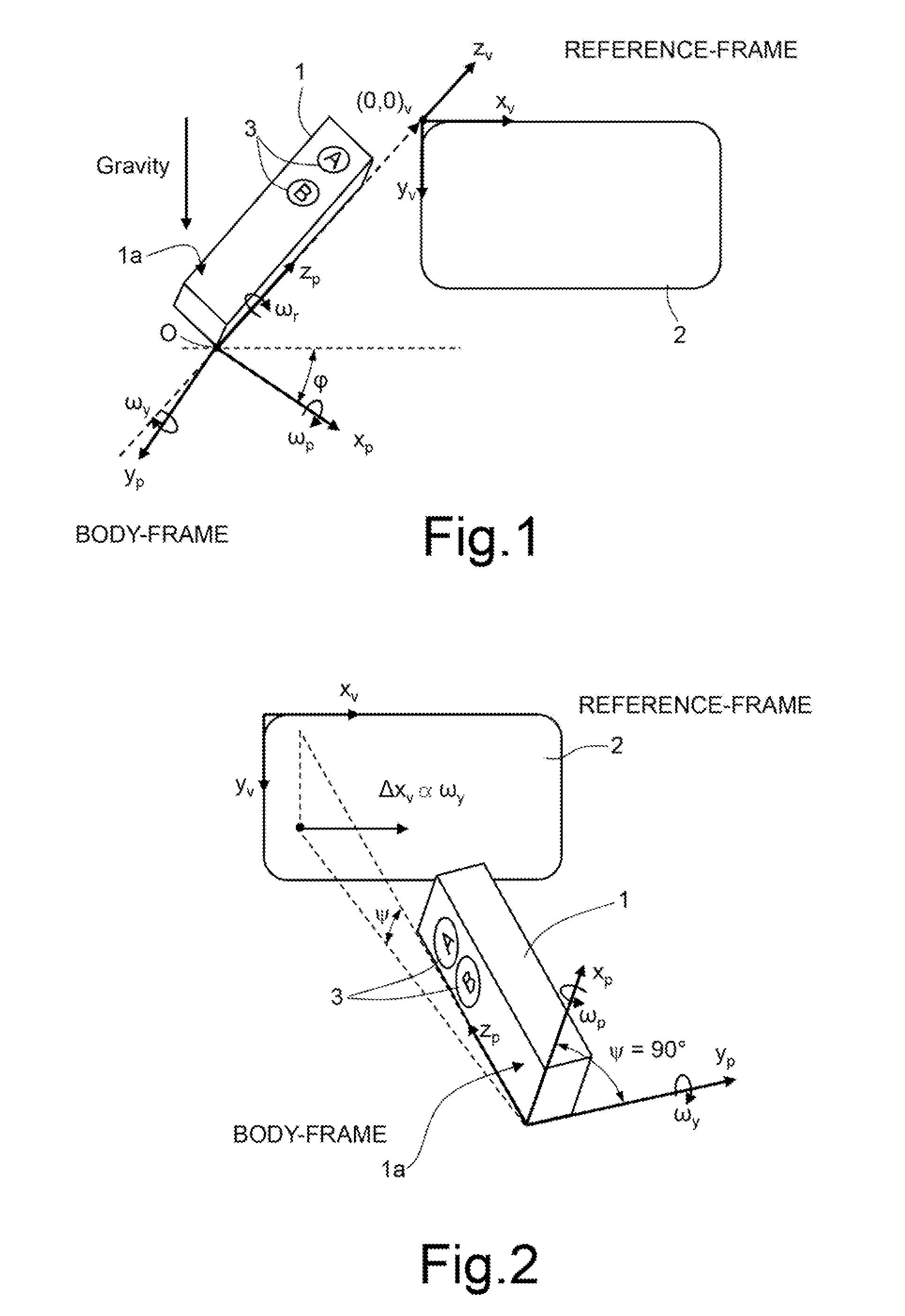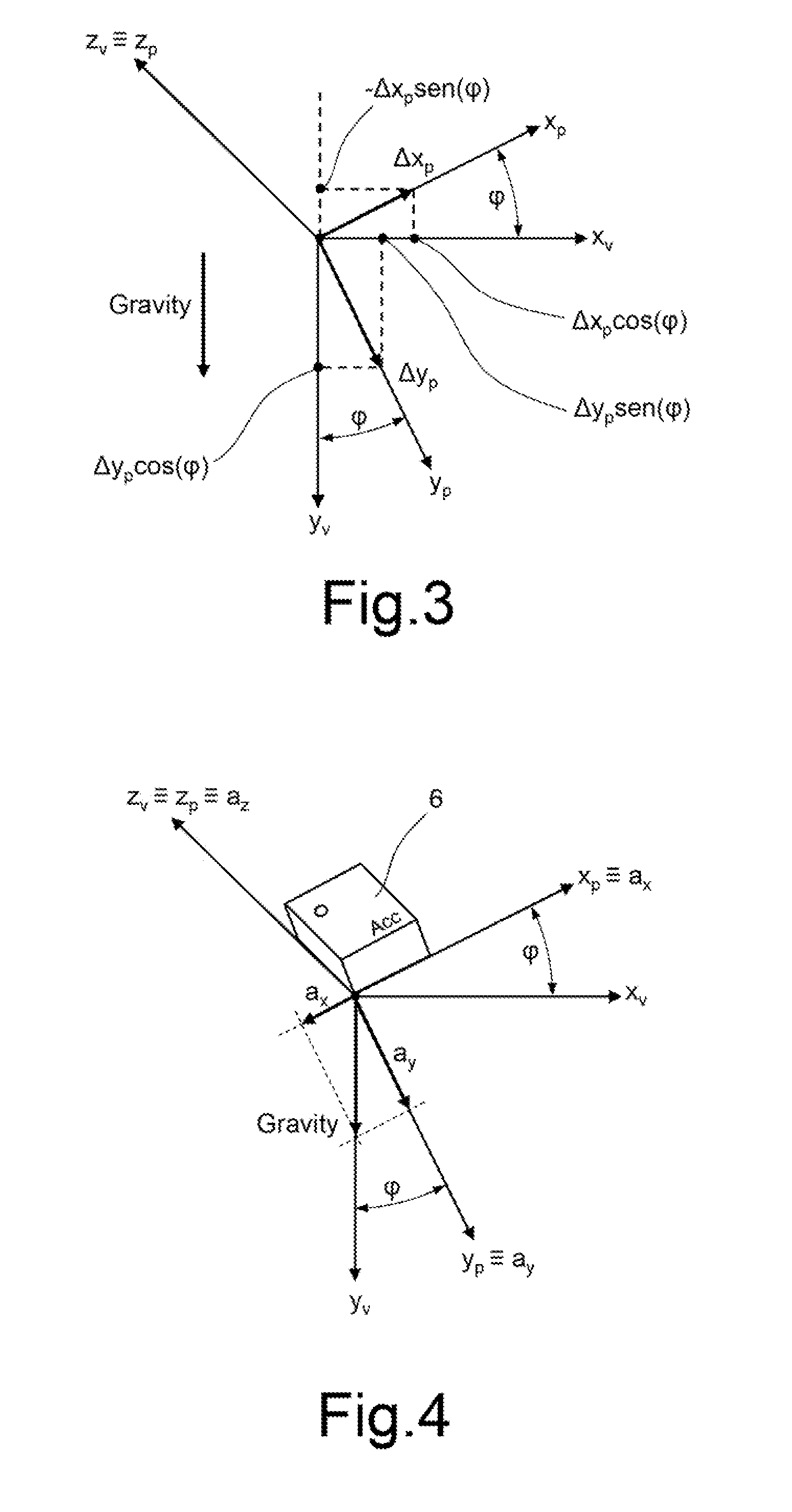System and method for compensating orientation of a portable device
a portable device and orientation technology, applied in the direction of speed measurement using gyroscopic effects, instruments, surveying and navigation, etc., can solve the problems of slowing or dropping the performance of the processing unit, unable to fully exploit the advantages of the technique, and affecting the immediacy of interaction with the user
- Summary
- Abstract
- Description
- Claims
- Application Information
AI Technical Summary
Benefits of technology
Problems solved by technology
Method used
Image
Examples
Embodiment Construction
[0060]As will be described in detail in what follows, an aspect of the present disclosure envisages, in order to compensate the orientation of the portable device, use of a gyroscopic sensor for determining the roll angular velocity to which the portable device is subjected, and the integration of the roll angular velocity for deriving the roll rotation angle to be used for the compensation operations. These compensation operations may be made in a way similar to what has been described previously with reference to Eqs. (10) and (11), i.e., by using the rotation matrix associated to the roll rotation angle.
[0061]As illustrated in FIG. 8 (in general, in this figure and in the subsequent ones, elements that are similar to others already described previously are designated by the same reference numbers), the roll rotation angle, once again designated by φ, is hence derived as a function of the roll rotation velocity ωr of the portable device 1 about the longitudinal axis zp, obtained f...
PUM
 Login to View More
Login to View More Abstract
Description
Claims
Application Information
 Login to View More
Login to View More - R&D
- Intellectual Property
- Life Sciences
- Materials
- Tech Scout
- Unparalleled Data Quality
- Higher Quality Content
- 60% Fewer Hallucinations
Browse by: Latest US Patents, China's latest patents, Technical Efficacy Thesaurus, Application Domain, Technology Topic, Popular Technical Reports.
© 2025 PatSnap. All rights reserved.Legal|Privacy policy|Modern Slavery Act Transparency Statement|Sitemap|About US| Contact US: help@patsnap.com



